Cheryl Mackowiak, Soil Scientist, UF/IFAS North Florid Research and Education Center
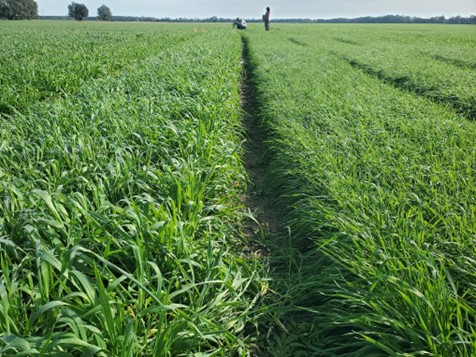
Figure 1. An experimental cereal rye (left) and ‘Kelly Grazer’ cereal rye on right (05 January 2023), following the December freeze event. Credit: Cheryl Mackowiak, UF/IFAS
What do you get when you follow a mild la Niña fall with a subfreezing, multi-day cold snap in Florida? You get Climate Chaos with a lot of winter forage damage and unhappy livestock. Temperatures fell below 20°F in North Florida over multiple days. Local, minimum nightly temperatures ranged from 22 to 18°F from December 23rd through December 28th. Additionally, the daytime maximum temperature remained below 30°F on December 24th. Earlier (October) plantings of cool-season forages generally tolerated the cold conditions a bit better, as larger plants can normally withstand freeze events. However, cold damage played havoc on many plantings. Protect yourself against sudden weather surprises by knowing the relative differences in cold tolerance among some of our more common cool-season forages and planning blends accordingly.
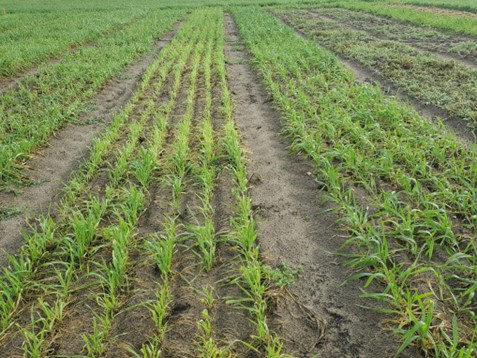
Figure 2. Wheat (left) and triticale (right) on 05 January 2023, following the December freeze event. Credit: Cheryl Mackowiak, UF/IFAS
With sponsorship from the Southeast Dairy Board, UF/IFAS faculty demonstrated a multitude of grass and a few legume forage species and varieties at several dairies. Many Florida county extension agents also received demonstration materials for on-farm testing. Based on experience and results of the recent cold event, researchers ranked the grass forage species for cold tolerance in the following order: cereal rye (Figure 1) and annual ryegrass > wheat and triticale (Figure 2) > oat >> black oat (Figure 3).
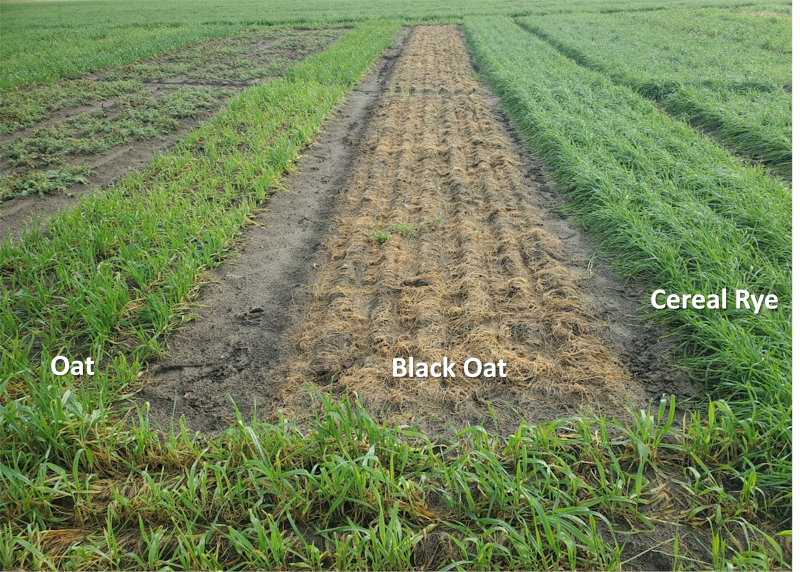
Figure 3. Oats, Avena sativa (left), black oats Avena strigosa (center) and cereal rye (right) on 05 January 2023, following the December freeze event. Credit: Cheryl Mackowiak, UF/IFAS
–
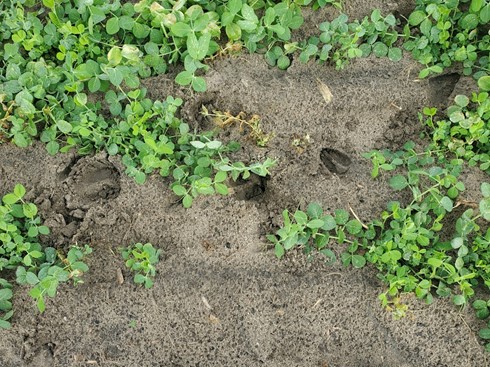
Figure 4. Winter pea on 05 January 2023. Deer prints between plants. Credit: Cheryl Mackowiak, UF/IFAS
By comparison in our demonstration, winter pea and vetch performed well, and the deer thought so too (Figure 4)! Sometimes there can be differences in cold tolerance among varieties within a species, also. Use the annual Florida Cool-season forage variety recommendations fact sheet updated each fall to help identify varieties best adapted to Florida and the tri-state region.
Since we never know when adverse weather conditions might strike, consider using a blend of cool-season forages. For example, true black oat, Avena strigosa, (not Cosaque oat, Avena sativa) can be planted earlier (September) than most of our cool-season forages, in time for late fall grazing. Mixed with recommended varieties of common oat or triticale (high quality), cereal rye (good cold and drought tolerance) and annual ryegrass (good tolerance to wet soils and extended grazing into late spring), blends provide insurance against most weather surprises. We also observed that most of the clovers, particularly crimson clover, hairy vetch and Austrian winter pea tolerated the recent cold snap quite well. In comparison, we received some reports of alfalfa cold damage in the upper canopy that has likely set back production by a few weeks.
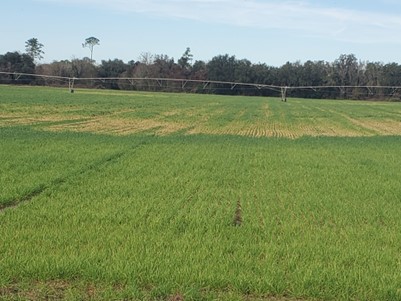
Figure 5. Oats on a Florida dairy (planted in late October). Note the cold damage followed the pattern of the pivot. Plants outside the pivot’s reach received less nutrients (nitrogen) during this period. Credit: Mackowiak
Although some of the cool-season forage grasses were less damaged if their nitrogen nutrition was low (Figure 5), it is nearly impossible to manage nitrogen fertilization around such an unexpected event. However, it is best not to apply nitrogen before expected cold (below approximately 50°F) periods, as the grass will typically not grow during frigidly cold days. Also, consider sampling your forage for nitrates prior to grazing if you had fertilized shortly before a cold snap and especially if you have cold damage. You might be able to dilute nitrate intake by greatly limiting the grazing period and provide a greater proportion of hay or other low nitrogen sources. However, testing the forage is the safest approach. Even so, grazing is a great way to remove the cold-damaged leaves and stimulate regrowth, prior to heading. It also can limit foliar disease problems that may follow cold damage (Figure 6).
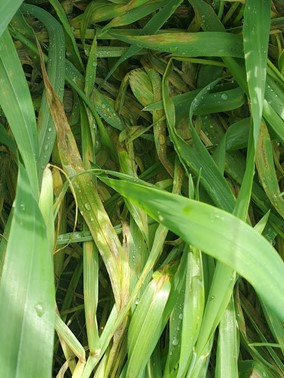
Figure 5. Cold damage (leaf tips) and some type of leaf spot (fungal) disease on oats following the December cold snap (identified on 05 January). Grazing off damaged leaves can spur forage regrowth. Credit: Cheryl Mackowiak, UF/IFAS
As for recovery following the recent cold event, you might still have time to replant with one of our earliest cereal rye varieties (Florida 401), if commercial seed is available. Annual ryegrass might provide some winter season forage if planted on tilled land but on pastures, the summer grass will likely compete against it, particularly if we get an early spring. In general, any of the cool-season annual forages will emerge and grow faster on clean, tilled soil. Avoid replanting with any forage species or varieties designated as mid or late maturing. If you need further guidance, please contact your local county extension agent. They are a great resource, particularly for preparing for Climate Chaos!
- Grower Survey Insights on Cotton Nitrogen Management in Florida’s Panhandle - July 18, 2025
- Florida Soils are an Indispensable Natural Resource - January 10, 2025
- Regenerative Agriculture: What it Means to You - June 21, 2024
